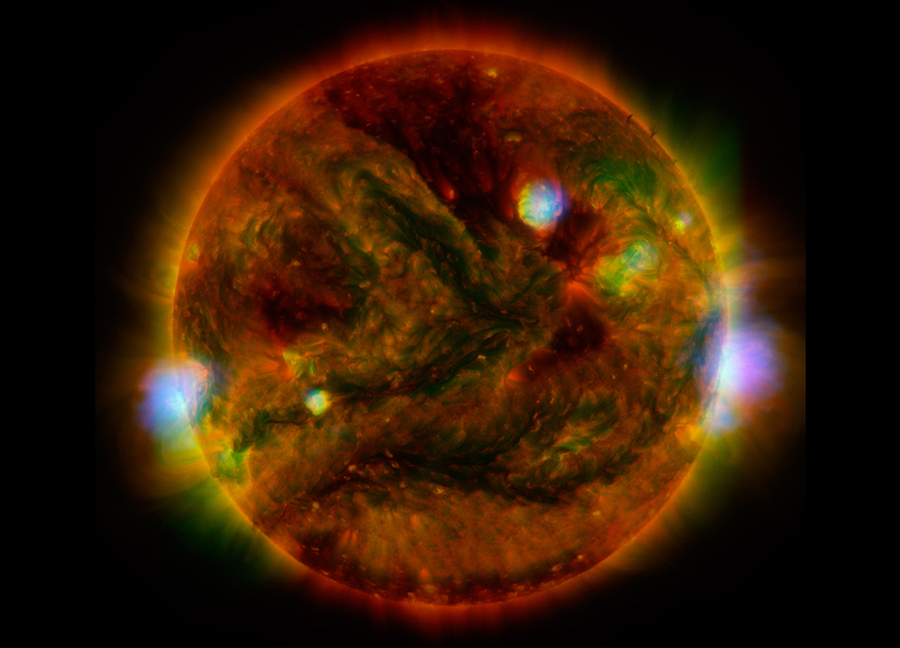
 Credit: NuSTAR; Hinode; SDO
Credit: NuSTAR; Hinode; SDO
Hard X-ray Sun
The Sun is a very well-studied object, but still mysterious in many ways. One long-standing mystery is that the temperature of the Sun's corona, the outermost part of the sun's atmosphere, reaches temperatures of millions of degrees. What heats it? Solar physicists have shown that this heating is produced by instabilities of the Sun's magnetic field, but the exact physical mechanism is still poorly understood. Large solar flares provide some of the energy input, but astrophysicists suspect that frequent, small flaring events ("nanoflares") may be a significant component in heating the solar corona. Nanoflares, however, are difficult to detect. But nano-flares may produce high-energy X-rays, so by studying the spatial distribution of the high-energy X-ray emission from the Sun, scientists may be able to determine how nanoflares contribute to heating the corona. The image above shows a composite UV, low-energy X-ray, and high energy X-ray image of the sun. The UV emission (in yellow and red) was obtained by the Solar Dynamic Observatory satellite, and the low-energy X-ray image (in green) was obtained by Japan's Hinode space observatory. The new high-energy X-ray image (in blue) was obtained by the NuSTAR space observatory, which usually spends its time measuring exotic objects like black holes. The high-energy emission seen by NuSTAR is apparently localized to a few hot spots on the Sun, associated with regions of high solar activity. Currently the Sun's magnetic activity makes difficult the direct detection of nanoflares by NuSTAR. But the Sun is approaching the minimum of its activity cycle, and continued monitoring by NuSTAR should reveal the importance of nanoflares in producing the extreme temperatures in the solar corona.
Published: July 20, 2015
<
HEA Dictionary ● Archive
● Search HEAPOW
● Other Languages
● HEAPOW on Facebook
● Download all Images
● Education ● HEAD
>

Each week the HEASARC
brings you new, exciting and beautiful images from X-ray and Gamma ray
astronomy. Check back each week and be sure to check out the HEAPOW archive!
Page Author: Dr. Michael F. Corcoran
Last modified Tuesday, 27-Feb-2024 10:08:23 EST


